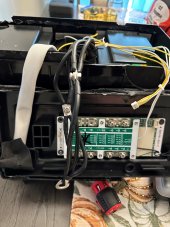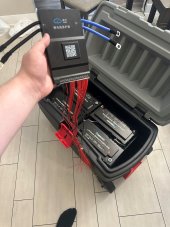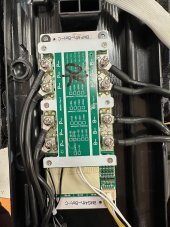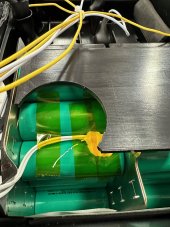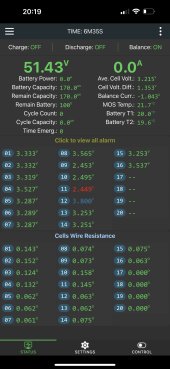meerkatmag
New Member
Hi, new to this forum but have built a number of solar systems for motorhomes over the years.
I installed 2 x renogy 170ah lifepo4 batteries in my van 18months ago, parallel 12v setup.
They are acting very strange and I wonder if anyone has any idea how to fix them. I've asked renogy for warranty replacement but they are being difficult about it, so not sure it will happen.
Basically, individually the batteries charge up to a certain point, then the battery cuts charging and won't let it get any further. When turning off charger the battery is at about 12.9v. If I apply a load to the battery after a short while it jumps up to 13.3v approx. Both batteries about the same.
It sounds like a cell imbalance with some kind of protection kicking in? I have tried loads of different voltage/current charging runs and so far can't get it to improve. If I run them right down they only last for about 80ah before the voltage is down around 12.5v so I don't think the full capacity is available.
Any ideas what's going on? Or what I can try to get them working?
I installed 2 x renogy 170ah lifepo4 batteries in my van 18months ago, parallel 12v setup.
They are acting very strange and I wonder if anyone has any idea how to fix them. I've asked renogy for warranty replacement but they are being difficult about it, so not sure it will happen.
Basically, individually the batteries charge up to a certain point, then the battery cuts charging and won't let it get any further. When turning off charger the battery is at about 12.9v. If I apply a load to the battery after a short while it jumps up to 13.3v approx. Both batteries about the same.
It sounds like a cell imbalance with some kind of protection kicking in? I have tried loads of different voltage/current charging runs and so far can't get it to improve. If I run them right down they only last for about 80ah before the voltage is down around 12.5v so I don't think the full capacity is available.
Any ideas what's going on? Or what I can try to get them working?



